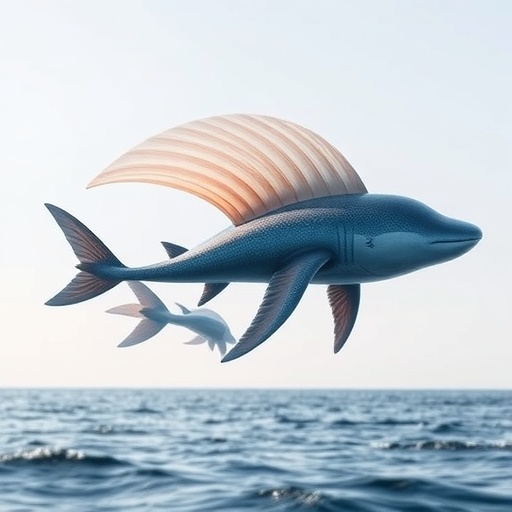In the vast expanses of our planet’s oceans, microscopic life forms engage in a genetic dance that has profound implications for evolutionary biology and marine ecology. Recent research led by scientists at Bigelow Laboratory for Ocean Sciences has unveiled a groundbreaking quantification of lateral gene transfer rates among marine microorganisms. This process, wherein genetic material moves horizontally between unrelated organisms, challenges traditional perceptions of microbial evolution and suggests a far more dynamic genetic interplay in the ocean’s microbial realm than ever before appreciated.
Lateral, or horizontal, gene transfer (LGT) is the mechanism by which organisms exchange DNA without direct descent, a phenomenon especially prevalent among single-celled entities such as bacteria and archaea. Unlike vertical gene transfer, which passes genes from parent to offspring, LGT facilitates genetic innovations that can be rapidly disseminated across diverse microbial communities, accelerating adaptation and ecosystem functioning. The Bigelow team’s novel study estimates that microbial cells incorporate and maintain approximately 13 percent of their genome via lateral gene transfer every million years, translating to an astounding daily swap of nearly 250 genes per liter of seawater.
This research, recently published in The ISME Journal, pioneers a quantitative framework to measure gene transfer frequencies across entire microbiomes rather than isolated gene families. Traditionally, microbial genetics relied on phylogenetic trees tracing evolutionary history through vertical inheritance. Such methods were inherently limited when addressing LGT because they focused on a handful of conserved genes and could not capture the complexity of gene flow in natural ecosystems. Metagenomic approaches, while powerful, often disregard rare or non-standard genetic elements, underestimating the true scope of gene exchange.
Overcoming these limitations required innovative strategies marrying high-throughput single-cell genomics with sophisticated computational modeling. The team at Bigelow Laboratory sequenced genomes from 12,000 individual microbial cells isolated from tropical and subtropical surface ocean waters. This rich dataset, representing one of the most extensive marine microbial genome compilations to date, enabled the researchers to discern patterns of gene sharing on an unprecedented scale. By comparing observed gene distributions with a computer model that assumed only vertical gene transfer, the deviations revealed the tangible impact of horizontal gene flow.
The data suggest that while most genetic exchange occurs between closely related microbes, there are significant instances of gene transfer bridging vast evolutionary distances—comparable to the genetic gulf between humans and kangaroos. Such distant gene acquisitions are ecologically consequential, providing novel functions that allow microbes to exploit previously inaccessible nutrients and thrive in nutrient-poor oceanic regions like the phosphorus-scarce Sargasso Sea. These findings illuminate how LGT acts as an evolutionary force that supplies microbial populations with adaptive advantages critical to survival in fluctuating marine environments.
A particularly surprising aspect of the study was the discovery of lateral transfer involving genes encoding ribosomal RNA (rRNA). rRNA genes have long served as cornerstones for reconstructing the tree of life due to their perceived resistance to horizontal transfer. Detecting lateral movement in these essential genetic elements forces a reevaluation of longstanding assumptions and implies that genetic exchange in marine microbiomes is even more pervasive and intricate than previously believed. This insight has broad implications for microbial taxonomy and biodiversity studies, which heavily rely on rRNA gene sequences.
The mechanisms driving lateral gene transfer are multifaceted, encompassing the uptake of free-floating DNA fragments from the environment, direct cell-to-cell conjugation, and phage-mediated transduction where viruses embed their DNA into host genomes. Yet, quantifying these mechanisms in situ has been notoriously difficult due to microbial diversity and the dynamic ocean milieu. The integration of single-cell genomics with computational simulations marks a significant technological advance, enabling researchers to estimate gene transfer rates with greater precision across natural microbial populations.
This interdisciplinary approach was bolstered by contributions from computational biologists led by Siavash Mirarab at UC San Diego, who developed a robust genetic exchange model. Their collaboration illustrates the critical role of data science in unlocking insights from vast, complex biological datasets. Modeling revealed that simple tree-like evolutionary relationships inadequately account for observed gene distributions, underscoring the necessity to consider lateral transfer in ecological and evolutionary models.
Looking forward, the research team aims to apply this methodology across diverse marine environments and microbial taxa to uncover how gene transfer rates vary with ecological context and microbial phylogeny. Such knowledge promises to unravel the intricate relationship between gene flow and environmental adaptation, enhancing our understanding of ocean microbial ecology. Furthermore, these revelations hold promise for biotechnology, where harnessing nature’s rapid genetic engineering could inspire novel applications.
Bigelow Laboratory’s Single Cell Genomics Center (SCGC) continues scaling its sequencing capabilities, intent on dissecting the complexities of horizontal gene transfer at ever finer resolution. The prospects of deciphering the nuanced mechanisms, lineage-specific tendencies, and ecological triggers of LGT beckon a new frontier in microbial evolutionary biology, with profound implications for environmental stewardship and the global bioeconomy.
In sum, this study profoundly expands our grasp of microbial evolution in the ocean, revealing a vibrant, ongoing exchange of genetic material that drives ecological innovation. By quantifying lateral gene transfer on a microbiome-wide scale, researchers have opened a window into the genetic undercurrents shaping some of the most abundant life on Earth. This work not only challenges conventional evolutionary paradigms but also illuminates the remarkable adaptability of marine microbes navigating a rapidly changing world.
Subject of Research: Cells
Article Title: Net rate of lateral gene transfer in marine prokaryoplankton
Web References: https://doi.org/10.1093/ismejo/wraf159
Image Credits: Bigelow Laboratory for Ocean Sciences
Keywords: Gene transfer, Marine life, Single cell sequencing, Evolution, Phytoplankton, Microorganisms, Bacteria, Computer modeling




